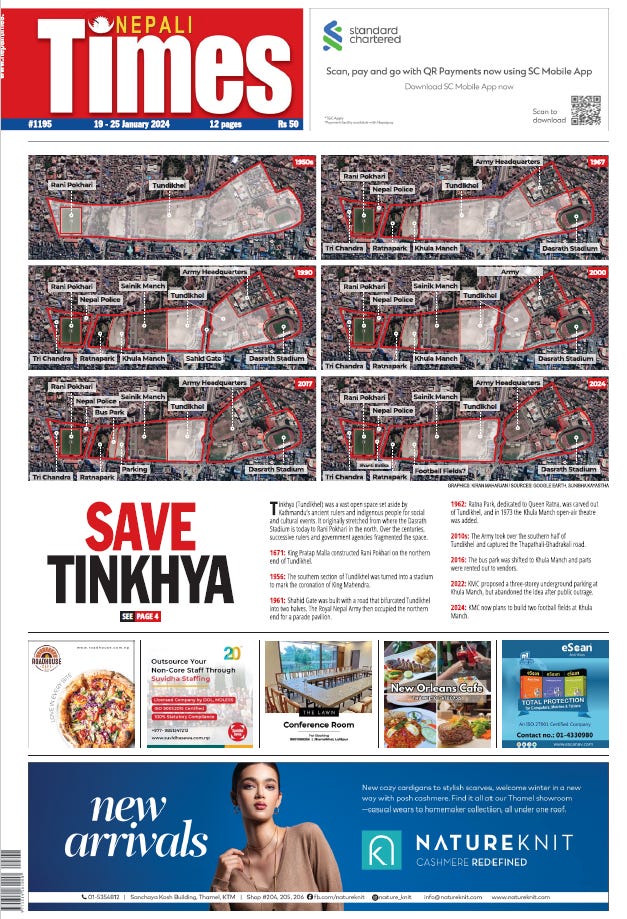Nepali Times ePaper
Dear Nepali Times Reader,
Tundikhel, once a vast open space, has shrunk significantly due to military and institutional encroachments over the years. Despite its diminishing area, the Kathmandu Metropolitan City (KMC) plans to build two football fields at Khula Manch, a historic part of Tundikhel and one of the two last open areas left.
KMC says the plan was put forth to address the difficulty local football clubs face in finding practice fields, but activists and Kathmandu residents have opposed the plan, fearing it will further limit public access to the space.
The Nepal Indigenous Legal Society also argues that encroaching on the area violates the United Nations Declaration on Rights of Indigenous People and ILO Convention 169. Read 'Save Tinkhya' by Sahina Shrestha on Page 1 this week.
Other highlights:
The International Order Is Dying in Gaza
The post-World War II global order is collapsing, marked by increased violent conflicts, a declining multilateral security system, widening inequality between the Global North and South, and escalating rivalry between the United States and China. The Israel-Hamas conflict has further strained the system, with gross violations of international humanitarian law. There's a growing rupture between the West and the Arab-Muslim world. Nobel peace prize winner Mohamed ElBaradei, writes for Project Syndicate.
British Pioneers of Tourism in Nepal
December 2023 marked two significant events for Nepal: surpassing one million tourists since 2019 and celebrating the centenary of the Britain-Nepal Treaty of Friendship. From a relatively unknown destination in 1923, Nepal has become a popular tourist spot, with nearly 53,000 Brits visiting in 2023. Read about British pioneers who played key roles in shaping Nepal's tourism landscape on page 6-7.
Walking the Talk on Mountain Climate
Accelerating Himalayan warming poses a global threat. It impacts billions downstream and jeopardises freshwater supplies and sea levels. COP28 recognised the critical issue, laying the groundwork for progress. But urgent global emission reduction and climate finance action is crucial, writes Manjeet Dhakal Nepal's delegate to the LDC negotiating team.
While India's Hindutva and Nepal's Hinduism share cultural ties, their political ideologies differ. In India, Hindutva is mainstream, sidelining secular and regional parties, while in Nepal, it is still nascent, arising from democratic decay. The failure of post-2006 political parties to address people's needs has led to the adoption of saffron symbolism for political survival. Some parties aim to roll back republicanism, delete secularism, or abolish federalism, fueled by discontent influenced by India's Hindutva forces. But it is unclear whether Hindutva has genuine support in Nepal, Chandra Kishore writes in the latest edition of his column Boderlines.
Memories of the Great Earthquake
Survivors recall the terror and grief when a 8.3 magnitude earthquake hit Nepal in 1934:
This and more at nepalitimes.com.
Have a great weekend.
Nepali Times



